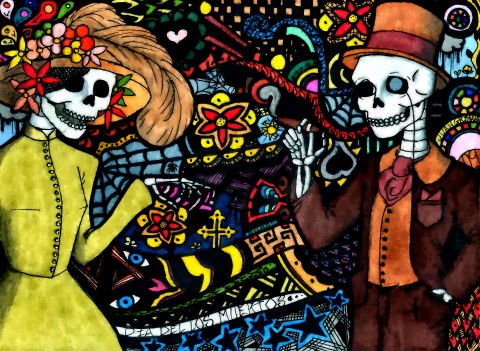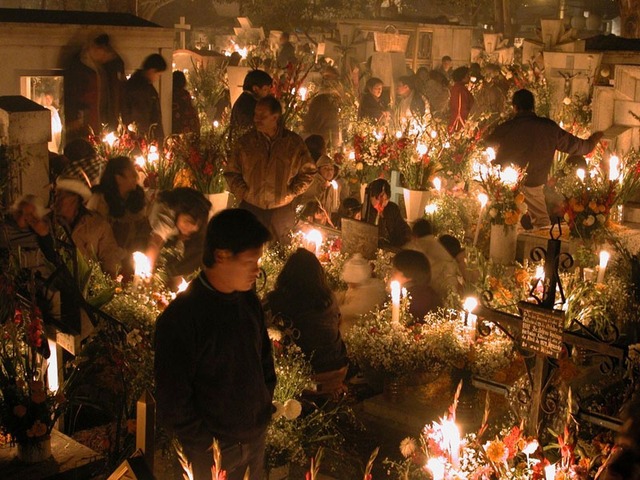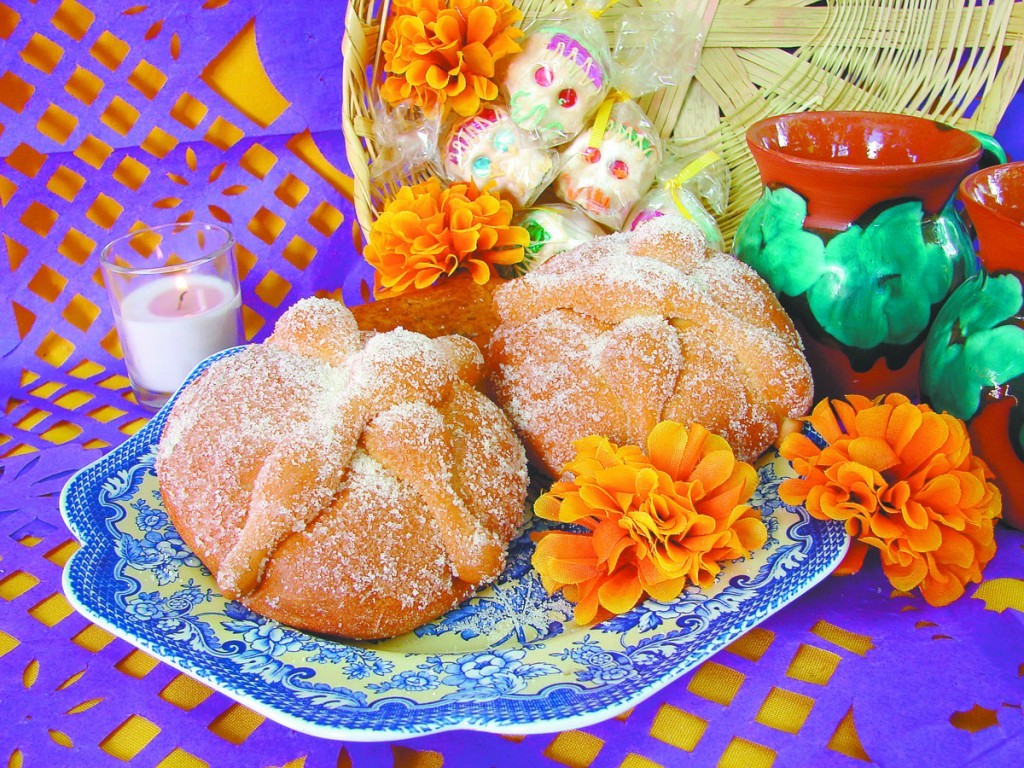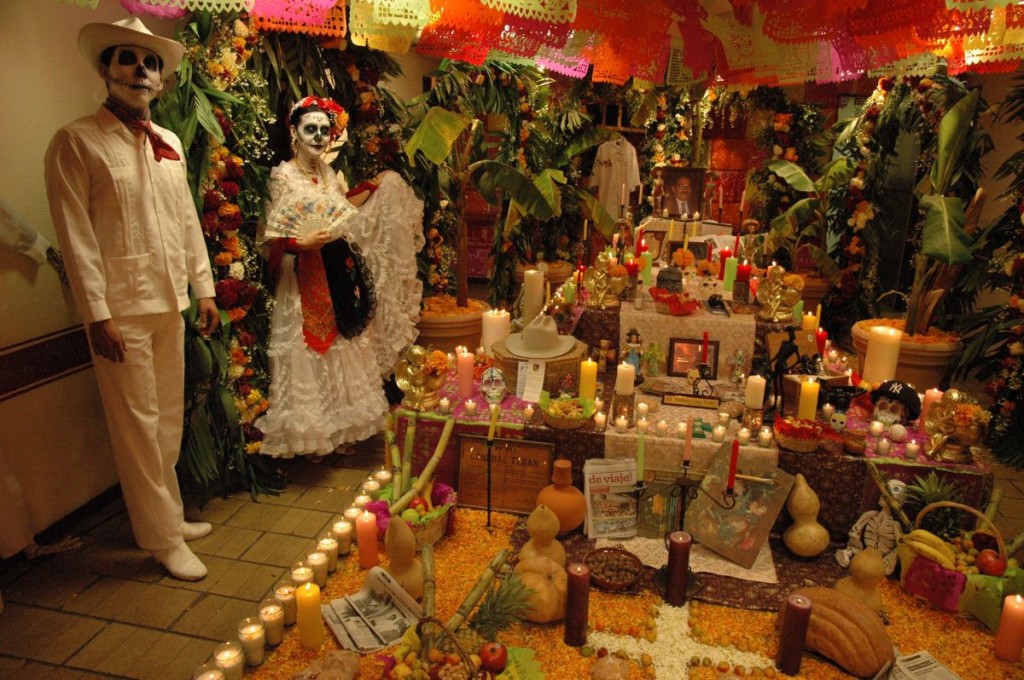The Day of the Dead…

While Halloween is celebrated in Mexico as in the rest of North America and other parts of the world, what is celebrated with more vigor is Día de Muertos (Day of the Dead) but what exactly is Día de Muertos? And what goes on?
The origins of the Día de Muertos celebrations rest in the 16th-century fusion of the Aztec’s belief in death as merely one part in the wider cycle of existence, their ritual venerations and offerings to the goddess Mictecacihuatl (Lady of the Dead) for deceased children and adults, and the Catholic celebrations of All Saints’ Day and All Souls’ Day. While contemporary observance of the Día de Muertos does include masses and prayers to saints and the dead, it is dominated by carnivalesque rituals to a far greater extent than the orthodox Catholic celebrations found in western Europe.

A graveyard during Día de Muertos
Día de Muertos is actually a two day festivity celebrated on All Saints’ Day (November 1st) and All Souls’ Day (November 2nd), minor holidays in the Catholic calendar. November 1st is Día de los Inocentes (Day of the Innocent), honoring children who have died. Graves are decorated with white orchids and baby’s breath flowers. November 2nd is Día de Muertos, honoring adults, whose graves are decorated with bright orange marigold flowers. Marigolds, in particular, are used because they held an important meaning in the Aztec culture. They are thought to have magical, medicinal, and spiritual attributes. Apart from brilliantly colorful flowers, the graves of families and friends are also adorned with offerings of food, such as the sugary pan de muerto (bread of the dead) and calaveras de azúcar (sugar skulls), as well as spices, toys, candles, and drinks amongst other things.
During this period, the popular belief is that the doors of heaven are opened and the deceased have divine permission to visit friends and relatives on earth and enjoy once again the pleasures of life. The dead are awakened from their eternal slumber to become a vibrant part of the community. They are remembered with objects and activities they enjoyed in life, such as food, drink, and music; while friends and family recount fond memories of the dearly departed.
The deceased are also commemorated with ofrendas (offerings),which are strikingly elaborate altars honoring those that have passed. Ofrendas often have flowers, candles, food, drinks, photos, and personal mementos of those being remembered. Each year at Oasis Hotels & Resorts the different departments of our hotels compete against each other to create the most impressive ofrenda.
A familiar symbol of Día de Muertos are the calacas and calaveras (skeletons and skulls) which appear everywhere during the holiday, for example as candied sweets, as parade masks, and as dolls. These calacas and calaveras are usually portrayed as enjoying life, often in fancy clothes and entertaining situations. Many people also get their faces painted to look like skulls.
Although the celebration is bittersweet and its symbols macabre, Día de Muertos is in fact a joyous, ritualistically elaborate celebration of life, rather than a sober mourning of its passing.As the Nobel prize-winning Mexican writer Octavio Paz explained in his seminal work Labyrinth of Solitude:
“The Mexican … is familiar with death, jokes about it, caresses it, sleeps with it, celebrates it. True, there is as much fear in his attitude as in that of others, but at least death is not hidden away: he looks at it face to face, with impatience, disdain or irony.”


